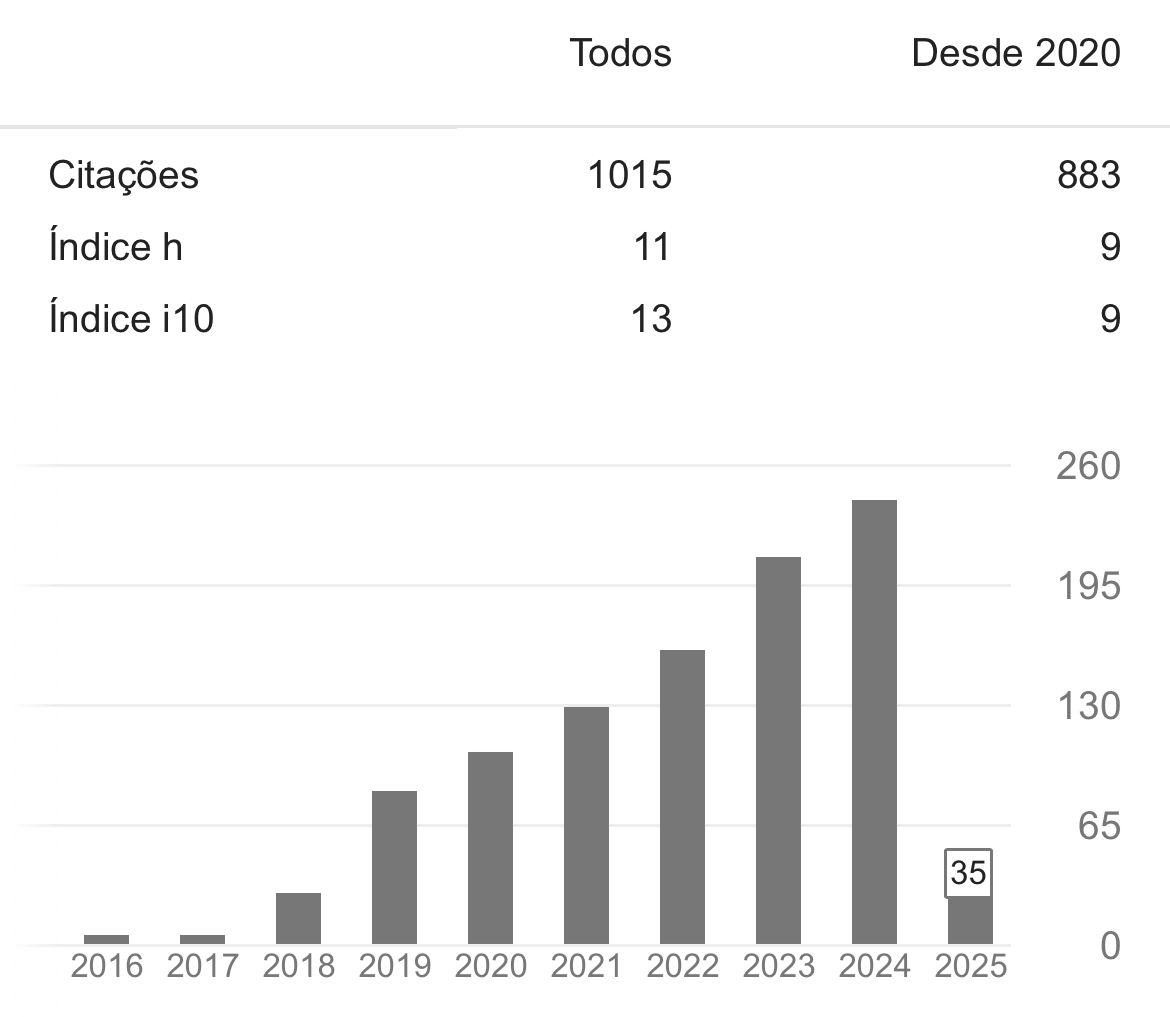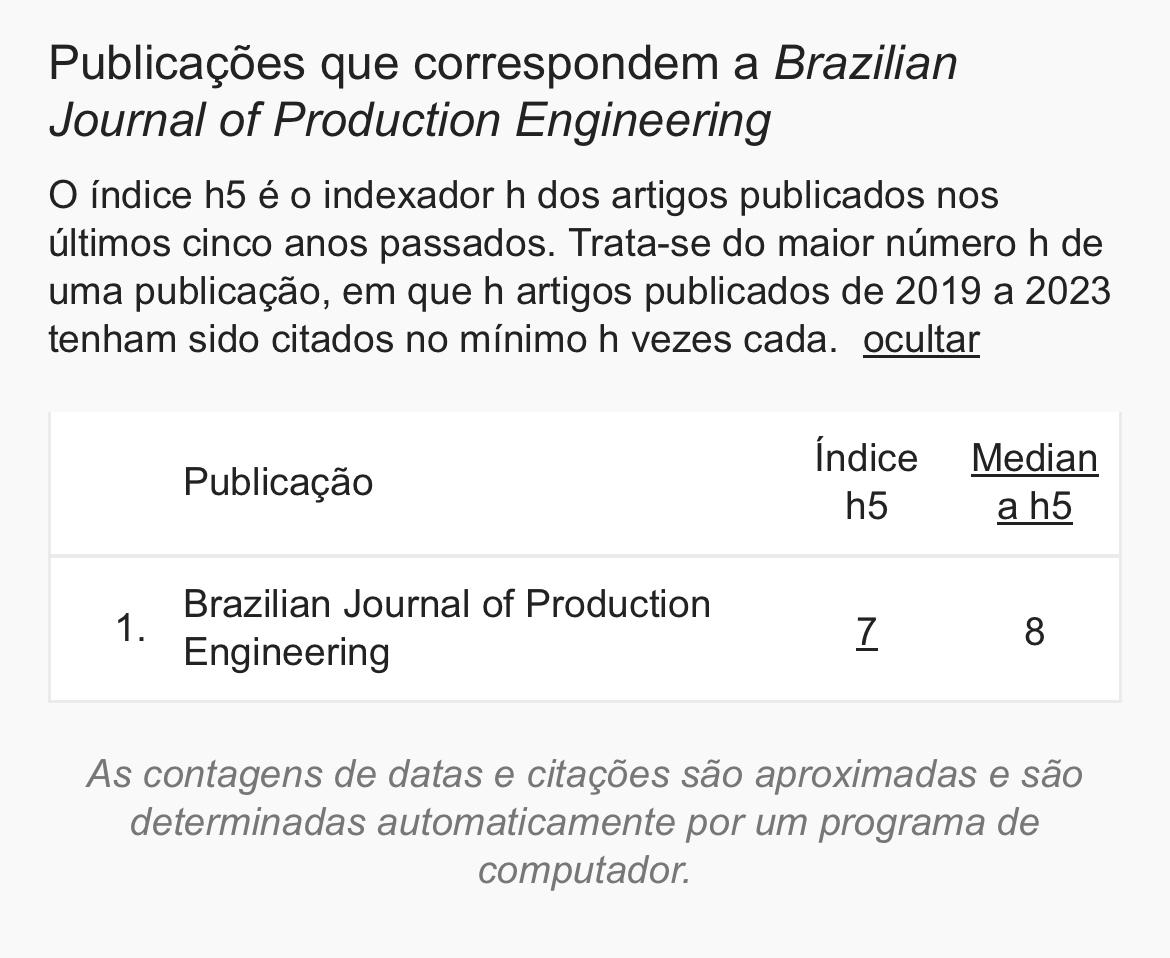Avaliação da influência de aditivos em fluido de perfuração a base de água com aplicabilidade em folhelhos da formação calumbi
DOI:
https://doi.org/10.47456/bjpe.v8i3.37896Palavras-chave:
fluidos de perfuração, inibidores, formações reativas, reologiaResumo
Os fluidos são essenciais na fase de perfuração de poço de petróleo. A composição muda de acordo com a aplicação. Para melhorar a eficiência, a indústria investiga diferentes aditivos para lamas de perfuração com aplicabilidade em formações reativas como a Formação Calumbi. Assim, este trabalho propõe a formulação de um fluido de perfuração de base aquosa com o objetivo de avaliar a reatividade em folhelhos da Formação Calumbi. Foi avaliada a influência da adição de aditivos inibidores (cloreto de potássio e polímero catiônico) e viscosificantes (goma xantana e carboximetilcelulose). As propriedades reológicas e as medições de molhabilidade do fluido foram realizadas de acordo com padrões específicos. Os resultados mostraram que o uso simultâneo de cloreto de potássio e polímero catiônico apresentou baixa reatividade nos folhelhos da Formação Calumbi. A presença da goma xantana promoveu menor interação entre o fluido e a rocha. A formulação proposta possui características compatíveis com uma formação, de grande relevância para a Bacia de Sergipe-Alagoas.
Downloads
Referências
Anderson, R. L., Ratcliffe, I., Greenwell, H. C., Williams, P. A., Cliffe, S., & Coveney, P. V. (2010). Clay swelling—a challenge in the oilfield. Earth-Science Reviews, 98(3-4), 201-216. https://doi.org/10.1016/j.earscirev.2009.11.003
Annis, M. R. & Smith, M. V. (1996). Drilling Fluids Technology. Exxon Company, United States.
API RP, A. (2009). Recommended practice for field testing water-based drilling fluids. In API Recommentation 13B-1, ISO 10414: 2001.
ASTM D 5890 (2002). American Society for Testing Materials. Swell Index of Clay Mineral Component of Geosynthetic Clay Liners.
Azambuja Filho, N. C. (2020). Guidebook to the rift-drift sergipe-alagoas basin.
Beg, M., Sharma, S., & Ojha, U. (2018). Effect of cationic copolyelectrolyte additives on drilling fluids for shales. Journal of Petroleum Science and Engineering,161, 506-514. https://doi.org/10.1016/j.petrol.2017.12.009
Bentrad, H., Esmael, A., Nouar, C., Lefevre, A., & Ait-Messaoudene, N. (2017). Energy growth in Hagen–Poiseuille flow of Herschel–Bulkley fluid. Journal of Non-Newtonian Fluid Mechanics, 241, 43-59. https://doi.org/10.1016/j.jnnfm.2017.01.007
Dak, M., Verma, R. C., & Sharma, G. P. (2006). Flow characteristics of juice of “Totapuri” mangoes. Journal of Food Engineering, 76(4), 557-561. https://doi.org/10.1016/j.jfoodeng.2005.06.002
Deshpande A., Krishnan J. M., & Kumar, P. B. S. (2010). Rheology of Complex Fluids. Springer.
Feijó, F. J. (1994). Bacias de Sergipe-Alagoas. Boletim de Geociências da Petrobras.
Fiorot, G. H., & de Freitas Maciel, G. (2019). Free-surface laminar flow of a Herschel–Bulkley fluid over an inclined porous bed. Journal of Non-Newtonian Fluid Mechanics, 272(7), 104164. http://dx.doi.org/10.1016/j.jnnfm.2019.104164
Fornasier, F. C., Campo, M., Djuric, A., & Obando, D. M. (2017, May). Designing environmentally conforming drilling fluids: Challenges and considerations in Latin America. In SPE Latin America and Caribbean Petroleum Engineering Conference. OnePetro.
Forsans, T., Durand, C., Onaisi, A., Audibert-Hayet, A., & Ruffet, C. (1995). Influence of Clays on Borehole Stability: a Literature Survey Part One: Occurence of Drilling Problems. Physico-Chemical Description of Clays and of Their Interaction with Fluids. Revue de l'Institut Français du Pétrole, 50(2), 187-218.https://doi.org/10.2516/ogst:1995017
Gianni, R., Fusi, L., & Farina, A. (2022). Non stationary channel flow of a Herschel-Bulkley fluid. Journal of Mathematical Analysis and Applications, 510(1) 126002. https://doi.org/10.1016/j.jmaa.2022.126002
Hollis, C., Vahrenkamp, V., Tull, S., Mookerjee, A., Taberner, C., & Huang, Y. (2010). Pore system characterisation in heterogeneous carbonates: An alternative approach to widely-used rock-typing methodologies. Marine and Petroleum Geology, 27(4), 772-793. https://doi.org/10.1016/j.marpetgeo.2009.12.002
Ji, G., & Zhu, J., (Eds.). (2020). Computational Fluid Dynamics Simulations. IntechOpen. https://doi.org/10.5772/intechopen.83278
Kelessidis, V. C., Maglione, R., Tsamantaki, C., & Aspirtakis, Y. (2006). Optimal determination of rheological parameters for Herschel–Bulkley drilling fluids and impact on pressure drop, velocity profiles and penetration rates during drilling. Journal of Petroleum Science and Engineering, 53(3-4), 203-224. https://doi.org/10.1016/j.petrol.2006.06.004
Khodja, M., Khodja-Saber, M., Canselier, J. P., Cohaut, N., & Bergaya, F. (2010). Drilling fluid Technogy: performances and environmental considerations. In: Fuerstner I (ed) Product and Services; From R&D to final solutions. Intechopen, Croatia, 228-255.
Ksiazek, M., Sobczak, N., Mikulowski, B., Radziwill, W., & Surowiak, I. (2002). Wetting and bonding strength in Al/Al2O3 system. Materials Science and Engineering: A, 324(1-2), 162-167. https://doi.org/10.1016/S0921-5093(01)01305-3
Lambourne, R., & Strivens, T. A. (Eds.). (1999). Paint and surface coatings: theory and practice. Elsevier.
Lucena, D. V., & Souto, C. M. R. A. (2016). Hidratação de Formações Reativas de Regiões Petrolíferas: Uma Breve Revisão. RunPetro, 4(2), 23-32. https://repositorio.unp.br/index.php/runpetro/article/view/1291
Lucena, D. V., Amorim, L. V., & Lira, H. L. (2016). Reactive analysis of shales from Recôncavo Baiano. Cerâmica, 62, 163-169. https://doi.org/10.1590/0366-69132016623621976
Machado, J. C. V. Reologia e escoamento de fluidos-ênfase na indústria de petróleo; 2° edição. Editora Interciência, 30-31.
Martins, R. M., & Bombard, A. J. F. (2012). Rheology of fresh cement paste with superplasticizer and nanosilica admixtures studied by response surface methodology. Materials and structures, 45(6), 905-921. https://doi.org/10.1617/s11527-011-9807-9
Montilva, J. C., Van Oort, E., Brahim, R., Quintero, L., Dye, W., McDonald, M., ... & Luzardo, J. P. (2007, November). Using a low-salinity high-performance water-based drilling fluid for improved drilling performance in Lake Maracaibo. In SPE Annual Technical Conference and Exhibition. OnePetro.
Nascimento, R. C. A. de M., Amorim, L. V., Lira, D. S., & Lira, H. L. (2010). O fenômeno de prisão diferencial: Uma revisão da literatura. Revista Eletrônica de Materiais e Processos, 5(2) 76-87. http://www2.ufcg.edu.br/revista-remap/index.php/REMAP/article/viewFile/188/319
Niu, M., Wang, S., Han, X., & Jiang, X. (2013). Yield and characteristics of shale oil from the retorting of oil shale and fine oil-shale ash mixtures. Applied Energy, 111, 234-239. https://doi.org/10.1016/j.apenergy.2013.04.089
Nóbrega, K. C., & Amorim, L. V. (2015). Influence of the Molar Mass of CMC in the Rheological Behavior and of Filtration of Clay Suspensions. Cerâmica, 61, 399-408. https://doi.org/10.1590/0366-69132015613601904
Petrobrás. (1998). Ensaio de viscosificante para fluido de perfuração base de água na exploração e produção de petróleo. Método, (2604).
Petrobras. (2009). Argila aditivada para fluido de perfuração a base de água na exploração e produção de petróleo. Método (2605).
Piau, J. M. (1996). Flow of a yield stress fluid in a long domain. Application to flow on an inclined plane. Journal of Rheology, 40(4), 711-723. https://doi.org/10.1122/1.550794
Qian, P., Guang, H., Xihua, Z., Cong, C., Zhaolong, G., Shujiao, S., ... & Jie, Y. (2021). Organic geochemistry, sedimentary environment, and organic matter enrichment of limestone-marlstone rhythms in the middle Permian northern Sichuan Basin, China. Marine and Petroleum Geology, 134, 105306. https://doi.org/10.1016/j.marpetgeo.2021.105306
Queiroz Neto, J. C., Biscaia Jr, E. C., & Petri, D. F. (2007). Adsorption behavior of polymer-based drilling fluids on SiO2. Química Nova, 30, 909-915. https://doi.org/10.1590/S0100-40422007000400028
Sengupta, S., & De, S. (2019). Couette–Poiseuille flow of a Bingham fluid through a channel overlying a porous layer. Journal of Non-Newtonian Fluid Mechanics, 265, 28-40. https://doi.org/10.1016/j.jnnfm.2019.01.002
She, H., Hu, Z., Qu, Z., Zhang, Y., & Guo, H. (2019). Determination of the hydration damage instability period in a shale borehole wall and its application to a Fuling shale gas reservoir in China. Geofluids, 1-17. https://doi.org/10.1155/2019/3016563
Silva, I. A., Silva, D. S., Buriti, B. M. A. B., Menezes, R. R., Neves, G. A., & Ferreira, H. C. (2019). Influence of Ca2+ in the rheological properties and filtration of bentonitic clay dispersions in aqueous drilling fluids. Cerâmica, 65, 216-221. http://dx.doi.org/10.1590/0366-69132019653742619
Silva, I. A., de Sousa, F. K. A., Menezes, R. R., Ferreira, H. S., Neves, G. D. A., & Ferreira, H. C. (2018). Influence of lithium (Li+), sodium (Na+) and potassium (K+) on the rheology of Brazilian bentonites for use in water-based drilling fluids. Cerâmica, 64, 109-119. http://dx.doi.org/10.1590/0366-69132018643692267
Thomas, J. E., Triggia, A. A., Correia, C. A., Verotto Filho, C., Xavier, J., & Machado, J. (2004). Fundamentos de Engenharia de Petróleo. ed. Interciência: Petrobrás, Rio de Janeiro, Brasil.
Vale, M. M., Curbelo, F. D. S., Braga, G. S., & Garnica, A. I. C. (2017). Estudo do comportamento reológico de fluidos de perfuração base água: efeito da concentração de NaCl. HOLOS, 1(33), 214-228. https://doi.org/10.15628/holos.2017.5162
Van Oort, E. (2003). On the physical and chemical stability of shales. Journal of Petroleum Science and Engineering, 38(3-4), 213-235. https://doi.org/10.1016/S0920-4105(03)00034-2
Vidal, E. L. F., Felix, T. F., Garcia, R. B., Costa, M., & Girão, J. H. S. (2007, October). Aplicação de novos polímeros catiônicos como inibidores de argila em fluidos de perfuração à base de água. In Instituto Brasileiro de Petróleo e Gás. Anais do 4º Congresso Brasileiro de P&D em Petróleo e Gás (pp. 21-24).
Warr, L. & Berger, J. (2007). Hydration of bentonite in natural waters: Application of “confined volume” wet-cell X-ray diffractometry. Physics and Chemistry of the Earth, Parts A/B/C, 32(1-7), 247-258. https://doi.org/10.1016/j.pce.2006.02.048
Yuan, Y. & Lee, T. R. (2013). Contact angle and wetting properties. In Surface science techniques (pp. 3-34). Springer, Berlin, Heidelberg. https://doi.org/10.1007/978-3-642-34243-1_1
Downloads
Publicado
Como Citar
Edição
Seção
Licença
Copyright (c) 2022 Brazilian Journal of Production Engineering

Este trabalho está licenciado sob uma licença Creative Commons Attribution-NonCommercial-ShareAlike 4.0 International License.

Atribuição 4.0 internacional CC BY 4.0 Deed
Esta licença permite que outros remixem, adaptem e desenvolvam seu trabalho não comercialmente, contanto que eles creditem a você e licenciem suas novas criações sob os mesmos termos.
















































































